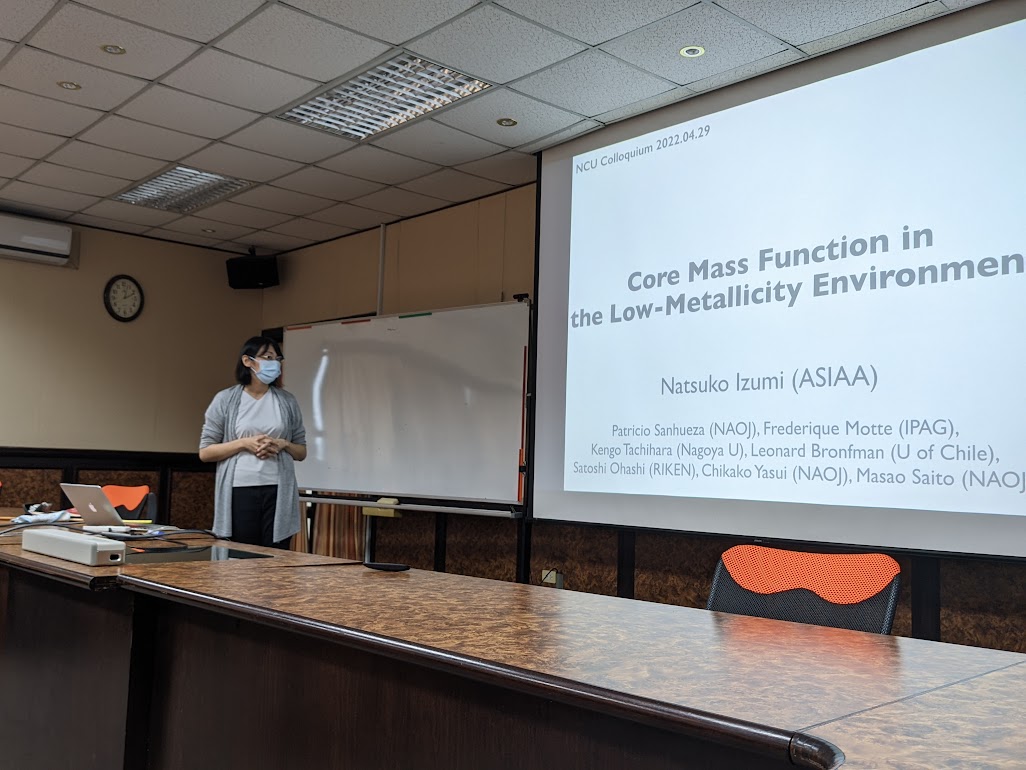Dr. Natsuko Izumi (泉奈都子博士) (ASIAA)

"Core mass function in the low-metallicity environment"
時間/地點: 2022-04-29 14:00 [S4-1013]
摘要:
Understanding the origin of stellar initial mass function (IMF) is a central issue in the study of star formation. The past studies of dense cores reported that the slope of the stellar IMF and core mass function (CMF) are consistent, suggesting that the fundamental mass distribution of stars is determined during the early stage of the core formation. However, dense cores have been observed and studied only in the inner part of the Galactic plane (including the solar neighborhood), which has similar metallicity to that of the solar neighborhood. Thus, an important question to address is whether the same relation between the CMF and stellar IMF holds true even in low-metallicity environments. Understanding star formation in low-metallicity environments is extremely important because the environment is similar to that of the damped Lyman-α systems and the early stage of the formation of the Galactic disk. Therefore, understanding the star formation process in low-metallicity environments will provide important information that is related to the history of galactic star formation and ultimately to the formation of early galaxies. To solve this question, we performed CO and dust continuum ALMA high-resolution (~0.1 pc scale) mapping observation toward a massive star-forming molecular cloud in the outer Galaxy, which has much lower gas density and lower metallicity (~20 % of the solar neighborhood value) than those in the solar neighborhood. As the result, we successfully detected ~0.1 pc-wide filament structures and ~0.1 pc-scale dense core structures in the outer Galaxy for the first time. We also found that the slope of the CMF in the outer Galaxy is similar to that of the universal IMF. These results suggest that the star-formation processes in the low-metallicity environment follow a universal law.
回上一頁